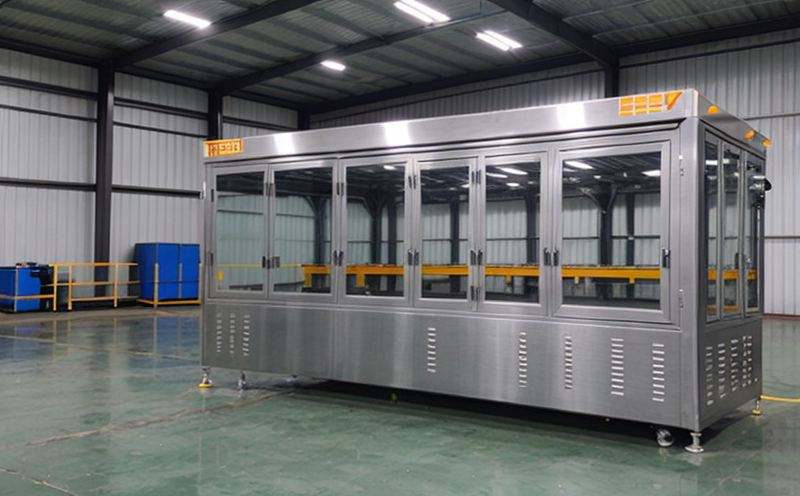ASTM E399 Fracture Toughness of Metals
The ASTM E399 standard is a critical tool in the packaging testing sector, specifically targeting metal packaging. This test evaluates the fracture toughness (KIC) of metals, which is an essential parameter for assessing material integrity and durability under stress. Fracture toughness measures a material's ability to resist crack propagation once a crack has initiated. For metal packaging materials, this property ensures that even if small cracks or flaws are present, the material can withstand significant stresses without catastrophic failure.
The ASTM E399 test method is widely used in industries such as food and beverage, pharmaceuticals, and chemical manufacturing where the integrity of metal containers directly impacts product safety. The test involves subjecting a notched specimen to controlled tensile stress until fracture occurs. This process is performed at room temperature or specific elevated temperatures depending on the material's application.
The testing procedure outlined in ASTM E399 ensures that all specimens are prepared uniformly, which includes precise machining of the notch and ensuring the surface finish meets specified standards. The test environment must also adhere to stringent conditions to ensure accurate results. Once fractured, the critical crack length is measured using specialized optical or digital gauges.
The significance of ASTM E399 lies in its ability to predict a material's resistance to brittle fracture under stress. This predictive capability is crucial for quality managers and compliance officers as it helps in selecting materials that meet stringent safety standards. For R&D engineers, this test provides valuable insights into the performance of new alloys or modifications to existing packaging designs.
The ASTM E399 standard also plays a pivotal role in procurement processes by ensuring that suppliers deliver materials that can withstand the rigors of distribution and storage conditions without compromising product integrity. By conducting this test, manufacturers can ensure that their metal packaging meets not only internal quality standards but also external regulatory requirements.
- Environmental Sustainability: Materials with high fracture toughness are less prone to premature failure, reducing waste and the need for frequent replacements. This leads to a more sustainable use of resources.
- Economic Benefits: Ensuring material integrity through this test can lead to cost savings by preventing product spoilage due to container failure.
- Consumer Safety: Reliable metal packaging that withstands stresses during transport and storage enhances consumer trust in the products they purchase.
Benefits
The ASTM E399 test offers several key benefits to organizations involved in metal packaging design and production. Firstly, it provides a reliable method for assessing fracture toughness, which is crucial for ensuring that materials can withstand the stresses they will encounter during use. This ensures that products are safe and reliable, enhancing consumer trust.
Secondly, the test helps in the selection of optimal materials by providing data on how different alloys or modifications perform under stress. This information is invaluable for R&D teams looking to innovate or improve existing packaging solutions.
Thirdly, compliance officers can use ASTM E399 results to ensure that metal packaging meets all relevant regulatory standards. This not only helps in avoiding costly legal issues but also ensures a consistent product quality across different markets.
The test also supports sustainable practices by identifying materials that are more durable and less prone to failure. This reduces the frequency of replacements, leading to lower waste generation and improved resource efficiency.
For quality managers, ASTM E399 provides a robust framework for quality assurance, ensuring that every batch of metal packaging meets strict safety and performance criteria. This consistency is vital for maintaining high standards throughout production processes.
Why Choose This Test
Selecting the appropriate test method is crucial in ensuring accurate and reliable results when assessing fracture toughness in metals used for packaging. ASTM E399 is specifically designed to provide consistent, repeatable results that are widely recognized and accepted within the industry. Its standardized procedure ensures that all labs conducting this test follow the same protocols, leading to uniform data across different organizations.
The test's precision and accuracy make it a preferred choice for companies aiming to enhance product safety and performance. By using ASTM E399, manufacturers can ensure that their metal packaging will not only meet internal quality standards but also comply with external regulatory requirements. This compliance is essential in navigating the complex landscape of global trade.
For R&D teams, ASTM E399 offers a valuable tool for evaluating new materials or modifications to existing designs. The insights gained from this test can lead to innovations that improve product performance and durability. Additionally, the test's reliability allows companies to make informed decisions about material selection, ensuring they choose the best options available.
Compliance officers benefit greatly from ASTM E399 by having a standardized method for assessing metal packaging quality. This ensures that all products meet stringent safety standards, reducing the risk of non-compliance and potential legal issues. The test's credibility in the industry also enhances consumer trust, which is critical for maintaining brand reputation.
The sustainability aspect of ASTM E399 is another compelling reason to choose this test. By identifying materials with higher fracture toughness, companies can reduce waste and improve resource efficiency. This contributes to a more sustainable approach to packaging design and production.





